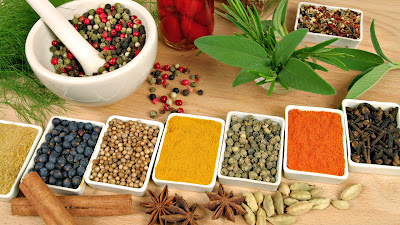Tuesday, 20 May 2014
Thursday, 15 May 2014
Global Pistachio Suppliers Guide
There is huge demand of dry fruits in every country. There
are many traders working globally to import and export. You can find many
international suppliers and exporters around the world through our valuable
business services. Click here to find some of Pistachio suppliers
Thursday, 2 January 2014
Spice-Up your Food
A spice is a dried seeds,
fruits, roots, bark, or in the first place for the taste, color, or food
preservatives used vegetable material. Sometimes spice is used to hide other
flavors. Spices of herbs that parts of the leaf plants are also used for
flavoring or as a side dish, are made. Many spices have antimicrobial
properties. This may explain why spices are more commonly used in warmer
climates that have a contagious disease , and why the use of spices is
particularly prominent in the flesh, which is particularly prone to spoiling .
Spices were among the in Europe in the Middle Ages, the most common being black
pepper, cinnamon (and cheaper alternative cassia), cumin, nutmeg, ginger and
cloves most sought after and expensive products.
With the discovery of the New
World came new species, including allspice, bell and chili peppers, vanilla and
chocolate. This development kept the spice trade with America was late with his
new ingredients, profitable well into the 19th Century. Most spices and herbs
of different spice manufacturers are available in a finely ground for cooking or in raw form like a seed, nut, and
leaf or tuber shape. Most of the time, the bottom shape to the taste right, the
plate is required. As a rule, their whole spices keep longer than the ground
spice flavor. South Asian cuisines often use fresh roasting whole spices before
grinding for use, maximizing the flavors and aromas are released in the
groceries.
Often, when a recipe changes
require a fresh version is used, because the flavor change in the drying process.
Fresh herbs are almost always better than dried herbs, like some subtle
aromatics are lost during drying. When substituted in the recipe, a portion of
the dried herbs are approximately equal to 3 parts of fresh herbs. For example
corresponds to 1/3 teaspoon dried basil about a tablespoon of chopped fresh
basil.
Subscribe to:
Comments (Atom)


